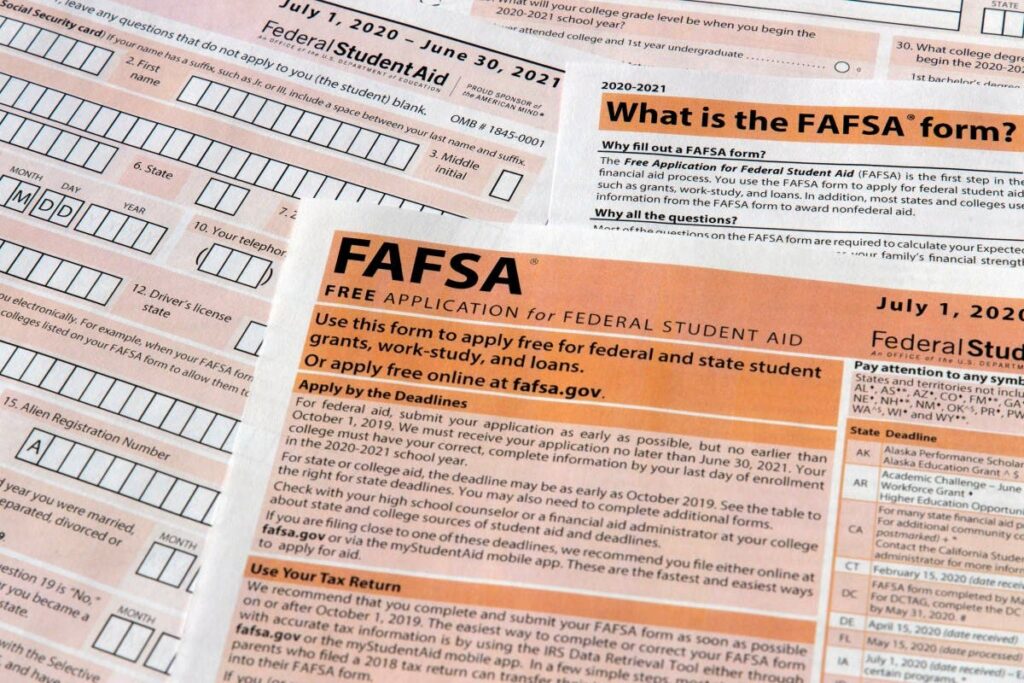The Department of Education (ED) will continue many of its core operations during the Government shutdown with student loan borrowers expected to make payments on their debt and aid still dispersed, according to its contingency plan.
The department, which manages the $1.6 trillion federal student loan portfolio, plans to furlough 87 percent of its workforce as the shutdown kicks in. Despite this, it will continue to disperse Pell Grants and Federal Loans, as well as process vital Free Applications For Federal Student Aid (FAFSA). However, the department will cease any new grantmaking activities.
Students have been warned that more problems could arise the longer a deal is delayed and it could be harder to reach someone if a problem arises.
Newsweek has contacted the Department of Education for further comment in an email sent outside of regular working hours.
Why it Matters
About 9.9 million students receive some form of federal aid, spread across some 5,400 colleges. According to the contingency plans, the ED will furlough 632 of its 747 employees within the Office of Federal Student Aid and 1,485 of its 1,700 non-FSA staff. The shutdown follows mass layoffs in the department, which Education Secretary Linda McMahon suggested had made it too lean in places when appearing before the House Appropriations Committee in May. The department had about 4,100 employees when Trump took office in January. It now has about 2,500.
What To Know
In a summary of the agency activities that will continue during the lapse, the DE’s contingency plan says:
- It will continue to disburse student aid such as Pell Grants and Federal Direct Student loans
- Borrowers will still be required to make payments on their outstanding student debt
- It will make Title I and IDEA grant funding available as usual
- States, schools and other grantees will continue to be able to access funds from the billions of dollars in recent awards made over the summer.
- The Office of Federal Student Aid will expect agency employees, as needed, to conduct certain rulemakings and other actions necessary to meet statutory requirements
Activities that are expected to lapse include new grantmaking activities, while the Office for Civil Rights will pause its review and investigations of civil rights complaints.
Most borrowers work with private loan servicers contracted by the department, so standard payment and account management should continue. The department will also continue to process the Free Application for Federal Student Aid, or FAFSA, which is a key piece of how colleges and universities provide aid packages to incoming students.
What People Are Saying
Persis Yu, Deputy Executive Director and Managing Counsel of the Student Borrower Protection Center, told CBS: “Student loan borrowers will still need to pay their bills during a shutdown. However, if things go wrong with their servicer, which they often do, borrowers are going to have fewer people to turn to to get those errors resolved.”
Betsy Mayotte, President and Founder of The Institute of Student Loan Advisors, told USA Today most borrowers should be able to reach servicers and vendors in a short shutdown but this could become “questionable” if it lasts weeks or months.
She added: “Most functionalities are handled by outside vendors, which should continue unless the shutdown is prolonged. If that happens, borrowers are encouraged to monitor updates on the studentaid.gov website.”
McMahon, in testimony before the House Appropriations Committee in May: “You hope that you’re just cutting fat. Sometimes you cut a little muscle, and you realize it as you’re continuing your programs, and you can bring people back to do that.”
What Happens Next
The ED said it would re-evaluate contingency plans to prevent disruptions to school districts and vulnerable students if funding lapses for more than a week.
This article includes reporting by the Associated Press.
Read the full article here

